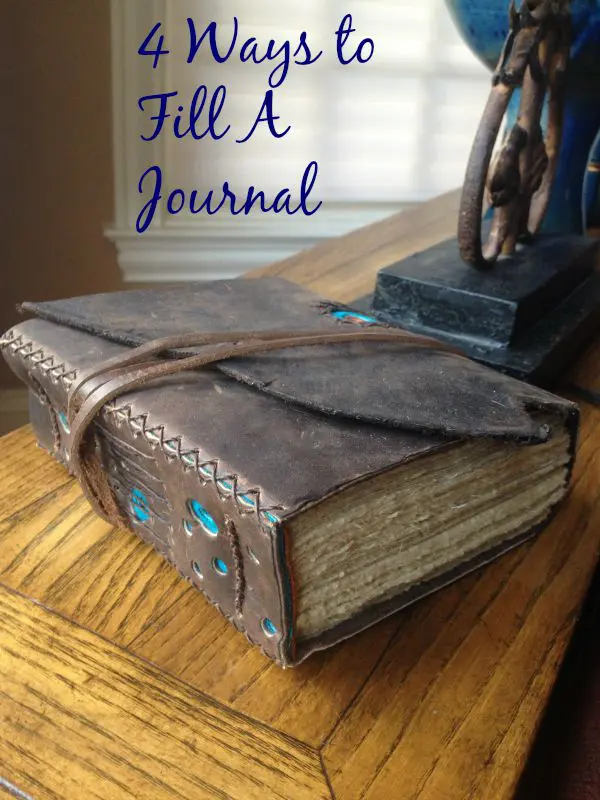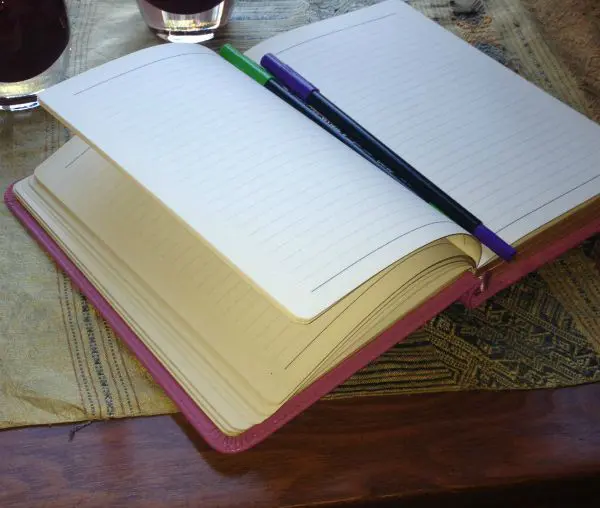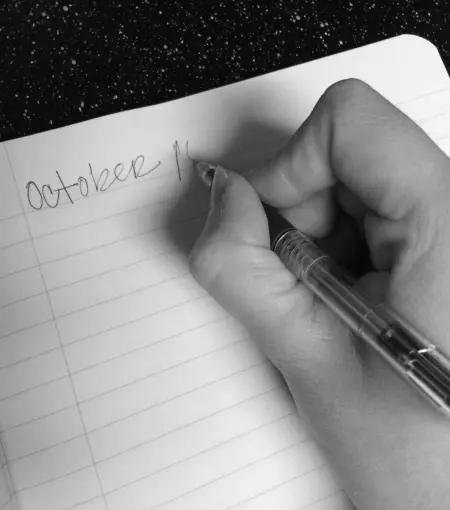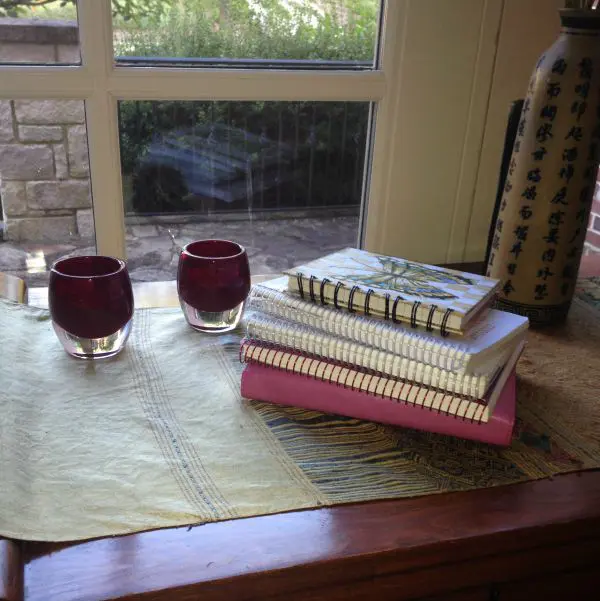Do you have any blank journals waiting to be filled? Have you been meaning to start a record of your thoughts and experiences? Sometimes we need a little help finding the motivation and consistency. Maybe you have received a journal as a gift, or bought one hoping to start writing daily. Personally, I just have a fascination with unique, antique, and beautiful books, including blank ones. In fact, I collect empty journals. I have lots of practice with finding ways to fill them. Keeping a consistent diary of “here’s how my day went” accounts can sometimes be challenging. So what are some other ways to fill a journal? Here are the different ways I record my thoughts via a blank journal. I hope these journal ideas get you inspired to start writing more regularly.
15 Journal Ideas To Get You Writing

Journaling is a powerful and personal way to reflect, express, and grow. Whether you’re looking to track your habits, process emotions, spark creativity, or simply make sense of your thoughts, putting pen to paper can be both calming and inspiring. With so many ways to journal, there’s something for everyone—whether you prefer short prompts, long entries, or even doodles. If you’re not sure where to start, these journaling ideas can help you find your voice and create a meaningful daily practice.
Ultimately, the reasons for journaling are highly individual, and the practice can be adapted to suit your needs and preferences. Whether you’re looking for self-discovery, stress relief, or personal growth, keeping a journal can be a valuable and fulfilling habit. Keeping a journal can be a great way to express your thoughts, emotions, and experiences. Journaling is also great for your mental health. Here are some journal ideas to get you started:
1. Fill it with your favorite quotes.
My parents gave me a colorful, leather-bound journal for Christmas last year. I decided to start recording quotes on its hundreds of pages. Every time I come cross an inspiring saying, words I can relate to, or even a funny quote, I add it to my quote journal. When possible, I organize them by topic. In this way, I can return to quotes more easily when I need specific inspiration or solace.
2. Find reasons to love life.
Write down 100 things that make you happy. Start a running list of foods you enjoy, songs that boost your mood, people that love you, and sights that awe you. Record all of the things that make you glad to be alive, whether substantial or slight. My list includes everything from my family members’ names to “bonfires,” “jigsaw puzzles,” and “warm sand on a beach”. Keep the finished journal close, and open it any time you need a pick-me-up. I keep mine in my car or my backpack, so that I can add to my list whenever inspiration strikes, or when I need some positivity on a difficult day.
3. Record adventures.
Every time you go somewhere for the first time, or even the first time in a while, take a picture of one object, face, or scene from that place. Then write a blurb about one exciting event that happened while you were there. If you enjoy photography, you can print the photographs and glue them into the journal. Write about the day or event underneath them. If you’re an artist, sketch the scene and write below. I’m not the best at drawing, but sometimes just enjoy trying to sketch the place. It can produce something entertaining at the very least! Document your travels, whether they’re local adventures or international journeys. Include details about the places you visit, people you meet, and your overall experiences.
4. Highs and lows
My family sometimes does “highs and lows” at the dinner table, where each person says their “high” and “low” for the day. Translate this thought exercise into a journal, and record the most positive event and most negative event from each day, on each page. Sometimes I can’t help myself from adding more “highs” than “lows,” or more “lows” than “highs”. Writing down snippets from each day helps me appreciate the good and put the bad in perspective.

5. Daily Reflections
Reflect on your day and jot down significant events, feelings, or observations. Consider what went well and what you might improve. Journaling provides a dedicated space for self-reflection. Writing about your thoughts, feelings, and experiences can help you gain insight into your emotions and behaviors. Record your dreams and any thoughts or emotions associated with them. This can be a fascinating way to explore your subconscious mind.
6. Bullet Journal
Bullet journaling is a customizable and versatile organization system that has gained popularity for its flexibility and creative potential. Created by Ryder Carroll, the bullet journal (BuJo) is a method that combines elements of a to-do list, planner, and diary. Develop a consistent system for symbols, colors, and layouts. This helps maintain clarity and organization among your bullet journal ideas.
7. Creative Writing
Let your creativity flow by writing short stories, poems, or even starting a novel. Use your journal as a space to experiment with different writing styles. Journaling can be a creative outlet. Whether through free writing, poetry, or storytelling, it allows you to explore your imagination and generate new ideas.
8. Bucket List
Create a list of things you want to do or achieve in your lifetime. Update it regularly as you accomplish items or add new ones. By documenting your goals and actions, a journal can help you hold yourself accountable. It becomes a record of your commitments and progress.
9. Mindfulness Journal
Journaling can be a mindful activity, encouraging you to be present in the moment as you articulate your thoughts and feelings on paper. Practice mindfulness by describing your sensory experiences in detail. Notice the sights, sounds, smells, tastes, and textures around you.

10. Self-Discovery Questions
Answer thought-provoking questions about yourself, your beliefs, and your aspirations. This can lead to deeper self-understanding. Expressing your emotions on paper can serve as a form of emotional release. It allows you to process and understand your feelings, reducing stress and promoting mental well-being.
11. Fitness and Wellness Journal
Keep track of your exercise routines, nutrition, and overall well-being. Note any progress, setbacks, or new goals. Use a journal to track your progress towards your personal goals. Writing down your objectives and progress can help you stay focused, motivated, and organized.
12. Idea Log
Capture your random thoughts, ideas, and creative sparks. This can serve as a brainstorming space for projects or solutions. Writing about challenges or dilemmas can help you gain clarity. The act of putting thoughts into words can sometimes reveal solutions or alternative perspectives on a situation.
13. Weather Journal
Record the weather each day and describe how it makes you feel. Over time, you might notice patterns in your mood based on the weather. As you begin this journaling practice you can keep it simple at the starting point and get more creative as you go. Try using pens of different colors and using symbols for mood trackers. Jot dot any positive emotions or difficult emotions you may be dealing with. Journal entries can be as simple or elaborate as you like.
14. Relationship Journal
Reflect on your relationships with family, friends, or partners. Write about your interactions, conflicts, and moments of connection. Documenting your daily life and experiences in a journal helps preserve memories. Years later, you can look back and relive moments, which can be a source of nostalgia and reflection.
15. Habit Tracker
By tracking your experiences and reflecting on your responses, you can identify patterns and areas for personal growth. This self-awareness can be a powerful catalyst for positive change. Monitor and evaluate your habits. This could include tracking your sleep, water intake, exercise, or any other habits you’re trying to develop.
Conclusion
Creative expression has always been a tried-and-true therapeutic outlet. For me, writing has always been my favorite form of creativity. These journaling methods have helped me process my emotions, record life experiences, and collect thoughts, all while producing journals full of scribbles, doodles, and words that I can carry with me into the future. Every blank page is a fresh start and a powerful tool for personal development and expressing my emotions.
Journaling is great for kids too! Journaling for kids is a great way to express their feelings and cultivate creativity.

Blogging can also be an especially exciting form of journaling. It allows you to share your ideas with a community and learn about other people’s experiences. Have you tried a digital online journal?
Remember that your journal is a personal space, and there’s no right or wrong way to keep one. Tailor these ideas to fit your preferences and goals. The most important thing is to make journaling a positive and meaningful part of your routine. Do you keep a journal? What’s your favorite way of recording your experiences? Share your best journal ideas in the comments!
Related Posts:
Gratitude Journal for Teens With Daily Prompts

Janice Trinh says
I love journaling – but I need to do more journal writing in my everyday life. I suppose my blogging is a type of journaling. But I have so many notebooks that I often start but never get going! I love pretty notebooks and journals. haha! I’m trying to get my eldest daughter into journaling too for personal development. Unfortunately, I think she’s inherited the “notebook hoarding gene” from me! 😉
Tracie says
I love collecting cool notebooks and journals. I have so many now I have a hard time finding time to go back through them. I love the idea of keeping a journal of quotes. I have so many saved on my computer. I really need to do this. Thanks for the great ideas.
Journaling often involves working through problems on paper, which can enhance your problem-solving skills. Writing about challenges can provide a fresh perspective and potential solutions.
Donna Hup says
These are great ideas. Journaling can be a creative outlet. Whether through free writing, poetry, or storytelling, it allows you to explore your imagination and generate new ideas. I do keep an idea log to think of blog posts:) I use it to capture random ideas and aha moments.
Eli says
This is such a great idea! Keeping a personal journal is a good way to stay organized and reflect on your thoughts. I think I’ll use some of these journaling ideas next time I sit down to meal plan—it’s a good time to pause and get centered too!
Christelle says
I love how journaling can have such a positive impact on personal development and everyday life. Even during a hard time, writing down positive things or a short story can really lift your mood. I like to decorate my pages with washi tape—it makes it feel more special and fun to look back on later as my future self!